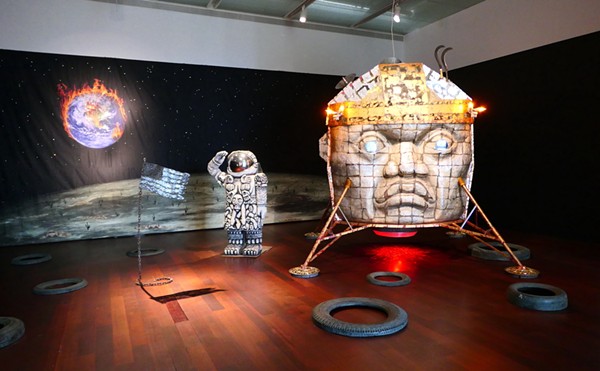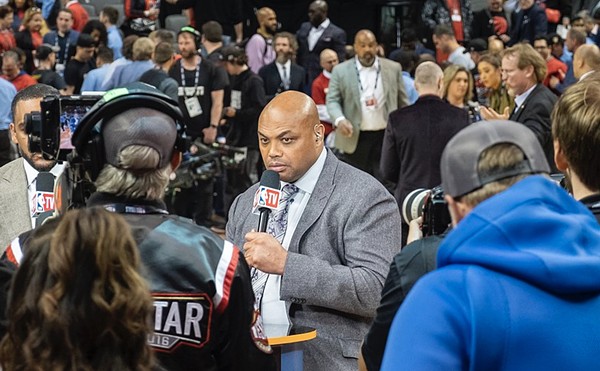This is a big blind spot for a lifelong comics enthusiast, but I have to admit I’ve never dug manga. Anime, from time-to-time (Miyazaki for sure, plus hokey Battle of the Planets stuff for guilty nostalgia), but those yards and yards of little volumes multiplying like kudzu near the bookstore’s graphic-novel section? Unless there’s a tie-in like the movie series based on Lone Wolf and Cub, I’m intimidated.
I was forced to confront my fear during a recent vacation in Japan, when I finally saw connections between art I love and today’s Japanese comics. A big goal of my trip was to soak up the woodblock prints of masters like Hiroshige and Hokusai, the former best- known for the 100 Views of Edo series, the latter for his Thirty-Six Views of Mount Fuji — reprinted gorgeously, along with 10 images made after Fuji’s success, in a recent book from Abrams.
But lingering in museums and learning about daily life in Edo-era Japan, I learned how this woodblock industry was intimately related to a kind of pulp fiction that was devoured by the Japanese. In the new Hokusai: First Manga Master (Abrams), two scholars (explaining that they’re not using “manga” in its current sense) take us through a sampling of the artist’s vast catalog of illustrations, used as example work by students who contributed pictures to these books, ranging from casual images of village life to flights of supernatural fancy.
The smorgasbord of images aren’t arranged to tell stories, but they often evoke narratives, and the larger spreads remind me of material I saw in the bookstores of Tokyo; where four or five whole floors are sometimes devoted to comics (and where every sort of person comes to shop). Returning to the U.S., I looked for an accessible entry point to this world and took a superficial element as a sign: Chip Kidd, who has designed covers for many of my favorite books has lent his talents to a small publisher named Vertical.
Vertical, it turns out, has released nearly a dozen volumes by “the godfather of manga,” Osamu Tezuka — creator of Astro Boy and the man credited with introducing the “large eyes” style to Japanese animation.
Tezuka’s total output is said to surpass 150,000 pages, so heaven help the American publisher trying to guess which of his series will win readers here. Vertical chose the eight-volume Buddha, the artist’s last major epic, perhaps because of the subject’s familiarity.
Buddha turns out to be a quick, very entertaining read, following what is known about the Buddha’s life but happy to play up fantastic details — like the feral naked boy, Tatta, who can possess jungle animals with his soul — in addition to the religious figure’s own supernatural powers.
The figures are cute and cartoony, but not overbearingly so, and Tezuka has a master’s knack for splaying action across the page. Each of the eight volumes is a few hundred pages long, but the drawings carry readers along quickly – you’re done before you know it. In an interesting and not too distracting touch, the translators occasionally update ancient references to modern ones — as with the holy man who is said to be able to transform “regular tap water into cola.”
Vertical followed Buddha with two titles from the early 1970s that, while weighty, are at least self-contained in single volumes. Apollo’s Song takes Greek myth as the launching pad for a modern science-fiction tale involving Nazis and leagues of cloned humans. Ode to Kirihito boasts plot elements worthy of Charles Burns: a disease that turns humans into dog-beasts and a doctor who, hoping to cure it, catches the plague himself. As the researcher travels the globe in his quest “normal” humans, unsurprisingly, turn out to be capable of much more beastly behavior than the infected.
I won’t say that the drawing style on display here is never off-putting — largely because Tezuka was so influential that his characters remind me of every awful would-be manga star I’ve seen — but unfortunate associations are outweighed here by the cartoonist’s epic imagination, smart writing, and iron-clad mastery of his craft. Now if only I knew where to go from here — assuming I’m not going to try to read 150,000 pages of Tezuka (most of them not available in English — whew) before branching out into the work of other manga giants. •

















